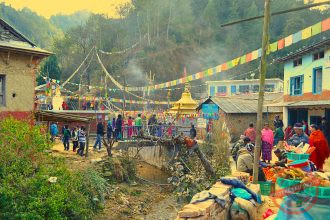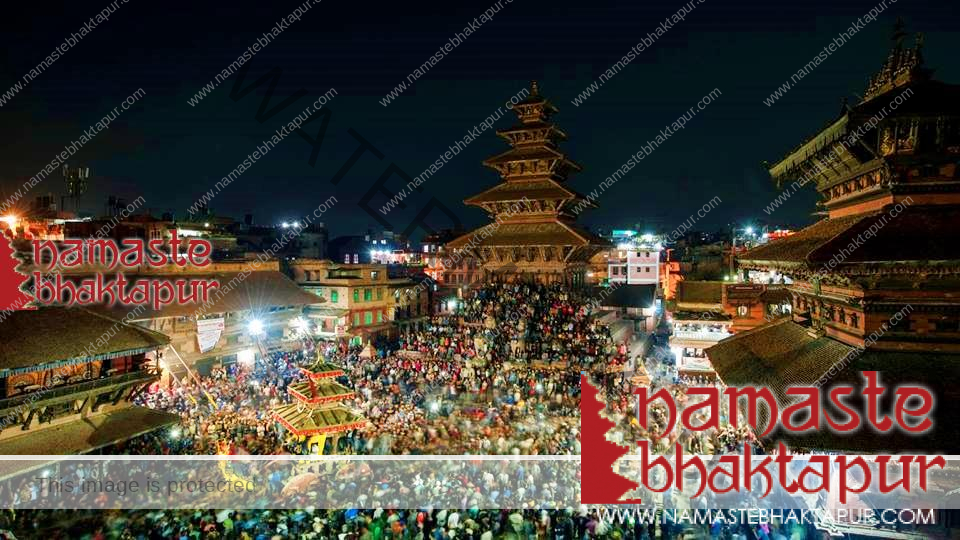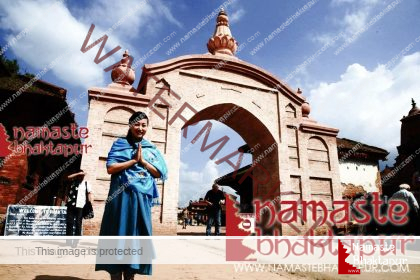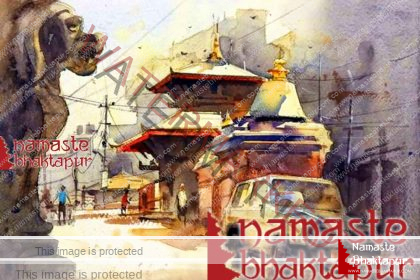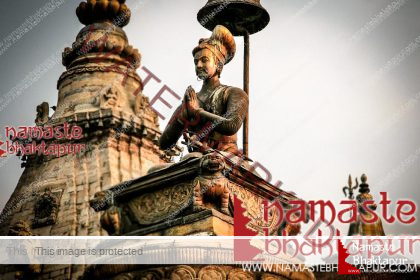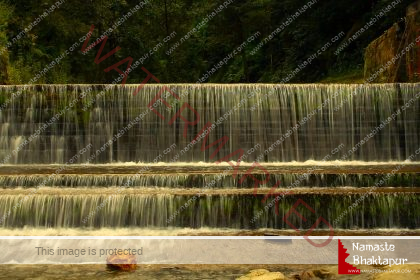Symbolically idealized shape A yantra with the 9 Mandalic Goddesses portrayed at the 8 compass points and in the center, drawn by a BhaktapurBrahman of Bhaktapur. In the map, the true physical location of the nine goddesses is shown.

Here, two overlapping triangles indicate the relationship of opposites, masculine and female principles, which are merged in a point in the diagram’s center. The name of Tripurasundari, one of Bhaktapur‘s 9 guardian deities, is carved into that central point. The names of the eight other protective goddesses can be found on the periphery, along the round boundaries. They’re set perfectly at the 8 points of the compass, with the top of the figure symbolizing north.

The 9 Mandalic Goddesses’ Pithas in their spatial placements. These are the actual spatial locations of the metaphorical yantra and mandala’s idealized points. When considered as a unified group of deities, the numerals designate the deities in the order in which they are worshiped: (1) Brahmayani, (2) Maheswori, (3) Kumari, (4)Bhadrakali , (5) Barahi Ajima, (6) Indrayani, (7)Mahakaili, (8) Mahalaxmi , (9) Tripurasundari.
The dense band of dots denoting the city’s extension in this and subsequent maps indicates the perimeter of the city’s currently built-up territory, the “Physical City”and does not always correlate to the city’s symbolic bounds. The major shrine, as well as those on the outside, are just about eight points of the compass away from the city center. One of them is considerably further from its “proper” location, being physically within the city’s symbolic limit rather than at or beyond the city’s outer border, as the other boundary-protecting shrines are.
According to one theory about that shrine, that of Mahalaxmi, “the sanctity of the [preexisting] old shrine forbade moving it to an optimal location outside the wall; engineering or other considerations dictated the latter’s course, thus enclosing the shrine within the city walls” during the construction of a boundary-marking city wall. Bhaktapur had to design and imagine a yantra and its surrounding mandala as best it could, in accordance with the conflict and conversation between the given on the one hand and the ideal symbolic form on the other.

This imaginary process perfects real-world features, many of which were created under the influence of that imagination—the city becomes a circumscribed circle rather than a flattened irregular oval. “Mandalic sections“—various axes and centers—have been developed simultaneously in a conversation of imaginary and actual space city halves. Like a geometric image reflected in a distorted mirror, such imaginatively developed forms exist in real space. People, on the other hand, have no problems finding their way around in either type of place, or in both at the same time.

